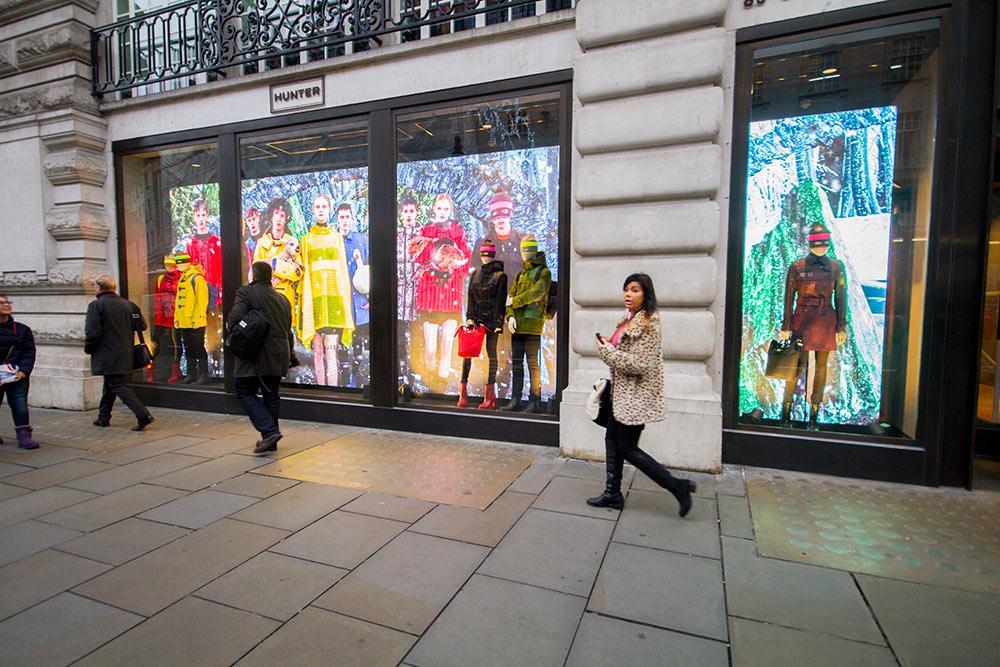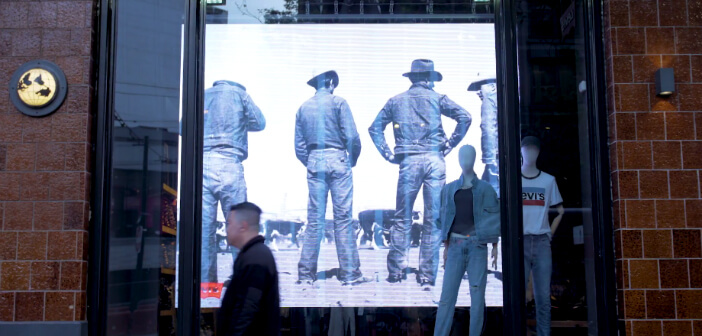The screen for the shop window
A shop window – regardless of whether it is on a busy street or in a shopping mall – is the first element that the customer sees. Properly designed, it allows you to stand out among the neighbors and effectively encourage you to enter the sales room.
Greater possibilities
The history of shop windows arrangement dates back to the 19th century. Since then, the marketing knowledge and the accompanying technologies have changed dramatically. However, it is only in recent years that the prices of electronics – including professional LCD monitors – have fallen to such a level that the introduction of an LCD screen to a storefront should not be considered from the perspective of budget possibilities, but more from the concept of content that we can display.
The 2 main functions of the storefront in terms of using the advertising screen:
– representative and encouraging “Research shows that as much as 23% of purchases are motivated by a shop window, 1 in 3 passers-by pay attention to an interesting shop window. 80% of respondents admit that they enter the store under the influence of the appearance of the site. In connection with such data, we can conclude that the dynamic message flowing from the advertising screen will attract attention even more than the sedate form of the poster.
– advertising (rotation) – it is very important for the site to change its face constantly, you cannot let the customers get stamped on it. It is worth changing its appearance according to the trading calendar or other special occasions. Installing a screen or a set of screens (Videowall) allows you to quickly change the appearance of the exhibition or the store’s offer, and bypassing traditional distribution channels and related problems, such as poster printing, logistics, hanging.

In the context of digital signage screens, storefronts must be divided into those located in shopping malls and those exposed directly to the street and sunlight. Where does this division come from?
In the case of screens exposed to daylight, we must use screens with increased brightness of 2500 cd (nit). If we do not follow the above rule, the image displayed on a normal screen will be completely invisible and therefore useless. In addition, high brightness screens are prepared to operate at a higher temperature, which will be achieved when the matrix is insulated through the shop window.
In the case of sites in shopping malls, the matter is easier because we can use screens with a brightness of 400-700 cd (nit), which are cheaper and will not be less susceptible to external factors.

Case studies
WHSmith
On April 1, 2016, WHSmith announced that it plans to equip 100 of its sites with LCD monitors. It is worth quoting the words of Ian Sanders, advertising development director at WHSmith: “The advertising industry has accepted digital signage as a step forward in outdoor advertising, which has encouraged retailers to use their facilities as a great environment to install LCD screens. WHSmitch is proud to pioneer the use of advertising monitors in convienence stores. The screens will give us uniqueness in terms of advertising and information opportunities, with simultaneous monetization and full control over the content ”

Levi’s
Market Street (San Francisco) is one of Northern California’s busiest streets. Such an environment naturally forces shops to do so, the street abounds in companies that must stand out in the methods of marchandising by constantly introducing new products and innovative methods of attracting attention. One of such companies is Levi Strauss, which produces iconic jeans. The company decided to install 2 large LED screens in their sites, offering very high brightness. Due to the need to leave the site as a natural light source, the client decided to use transparent LED panels that let in from 65-76% of sunlight. Senior Account Manager Brandie Perkins points out that thanks to the removal of standard backlights and replacing them with DS technology, they can freely save with films or display graphics that naturally draw the attention of passers-by

The above examples illustrate how universal the LCD screen is. Whether you are a single store owner, marketer, salesperson or store space decorator, an LCD monitor can provide you with opportunities that were not feasible before.